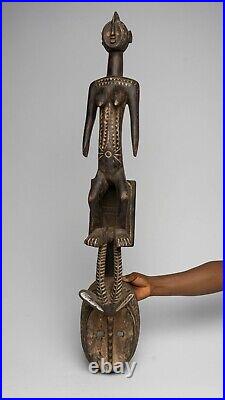
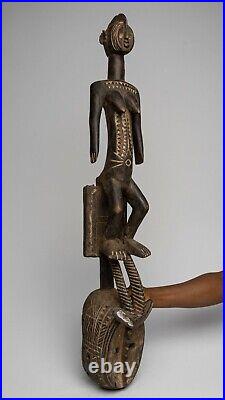
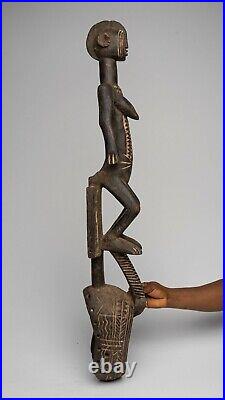
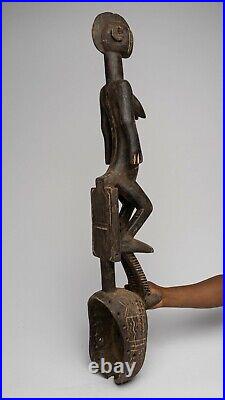
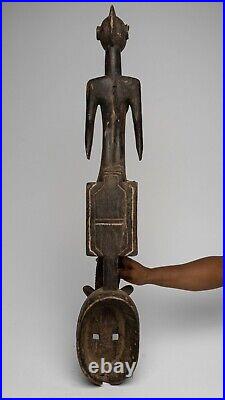
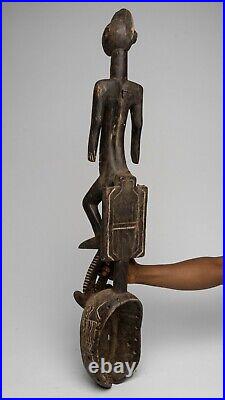
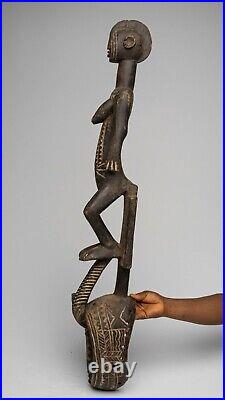
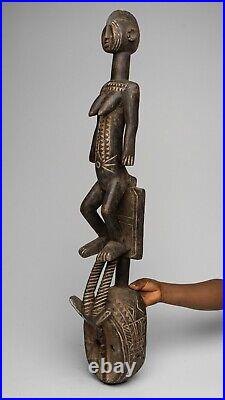
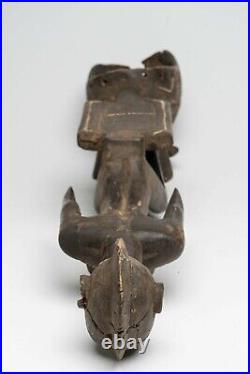
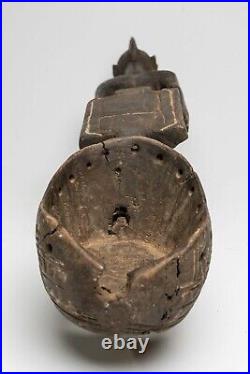
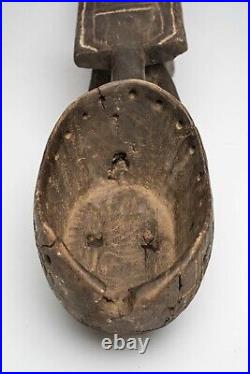
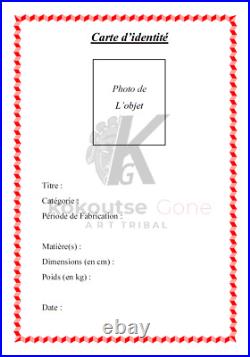

Thumb_up Depuis la france. Les Bwa vivent dans une région qui s’étend du Mali proche du pays. Au Nord jusqu’à la frontière du Ghana dans le centre de l’actuel Burkina Faso. Les Bwa ont une culture et des traditions riches de masques. Des masques en « bois et fibres » dédiés au culte du dieu Lanlee. Les plus grands, dits « masques-plaques » ou « masques-planches », sont connus des collectionneurs et des chercheurs du monde entier. Les bwa du Burkina réalisent également des « masques-feuilles » dédiés au dieu nommé Do. Beaucoup des masques en bois représentent des animaux, mais parfois aussi des personnages humains. Les grands masques, larges et hauts parfois de près de 2,5 mètres, appelés Nwantantay (le hibou), Dourô (l’épervier), Doho (le serpent) ou encore Yehoti (le papillon) représentent quant à eux l’esprit Lanle. Ces masques sont couverts de graphismes, noirs, blancs et rouges, souvent disposés en mosaïques, qui représentent les lois sociales et religieuses auxquelles les gens dans les villages doivent se conformer s’ils veulent recevoir la bénédiction de Dieu et faire partie de la communauté. Certains de ces dessins présentent des damiers noir et blanc, d’autres ressemblent à une cible, des traits en zig-zag représentent le chemin des ancêtres. Y figurent aussi des croix et des croissants. Aucun de ces motifs n’est décoratif. Ce sont bien des graphismes appartenant à tout un système d’écriture, qui peut être lu par quiconque a été « initié ». Ancienneté présumée : Entre 1960 et 1970. ZONE DE COLLECTE : BANFORA (BURKINA-FASO). Chez nous la livraison des pièces vendu en vente direct est et restera offerte pour la. Et les autres pays membres de. Pour nos clients qui sont dans les pays non membres de. Veuillez nous demander les frais réels de livraison de l’objet que vous souhaitez acquérir avant son achat, car le montant qui s’affiche sur votre écran est juste donné à titre indicatif. Il est possible qu’il soit revu à la hausse ou à la baisse après le calcul réel de ces frais. Tous nos objets sont livrés avec un document en format. Appelé la carte d’identité de l’objet qui donne des informations sur l’origine de la pièce et son essence. Illustration en dernière photo. The Bwa live in a region that stretches from Mali, close to the Dogon country in the north, to the border with Ghana in the center of present-day Burkina Faso. The Bwa have a culture and traditions rich in masks. Masks made of « wood and fibers » dedicated to the worship of the god Lanlee. The largest, called « plate masks » or « planks masks », are known to collectors and researchers from all over the world. The bwa of Burkina also make « leaf masks » dedicated to the god named Do. Many of the wooden masks depict animals, but sometimes also human characters. The large masks, which are wide and sometimes nearly 2.5 meters high, called Nwantantay (the owl), Dourô (the sparrowhawk), Doho (the snake) or Yehoti (the butterfly) represent the Lanle spirit. These masks are covered in black, white and red graphics, often laid out in mosaics, which represent the social and religious laws that people in villages must abide by if they want to receive God’s blessing and be part of the community. Some of these drawings have black and white checkerboards, others look like a target, and zig-zag lines represent the path of the ancestors. There are also crosses and croissants. None of these patterns are decorative. These are graphics belonging to a whole writing system, which can be read by anyone who has been « initiated ». Presumed age: Between 1960 and 1970. And the other member countries of the. For our customers who are in non. It is possible that it will be revised upwards or downwards after the actual calculation of these costs. All of our objects come with an. Size document called the Object Identity Card which gives information about the origin of the piece and its essence. Illustration in last photo. 359 – STATUE EWE MAMI WATA. A162 – MASQUE BWA. A164 – MASQUE BWA. B151 – TERRE CUITE BOURA. B074 – FETICHE FON. B165 – STATUETTE DE FERTILITE. Nous avons aussi une partie de nos objets au Togo que nous expédions sous 5 ou 7 jours en fonctions des formalités administratives. SATISFAIT OU REMBOURSÉ: Nous acceptons les retours sous 14 jours à compter de la réception du colis. Please get in touch and our expert support team will answer all your questions.
